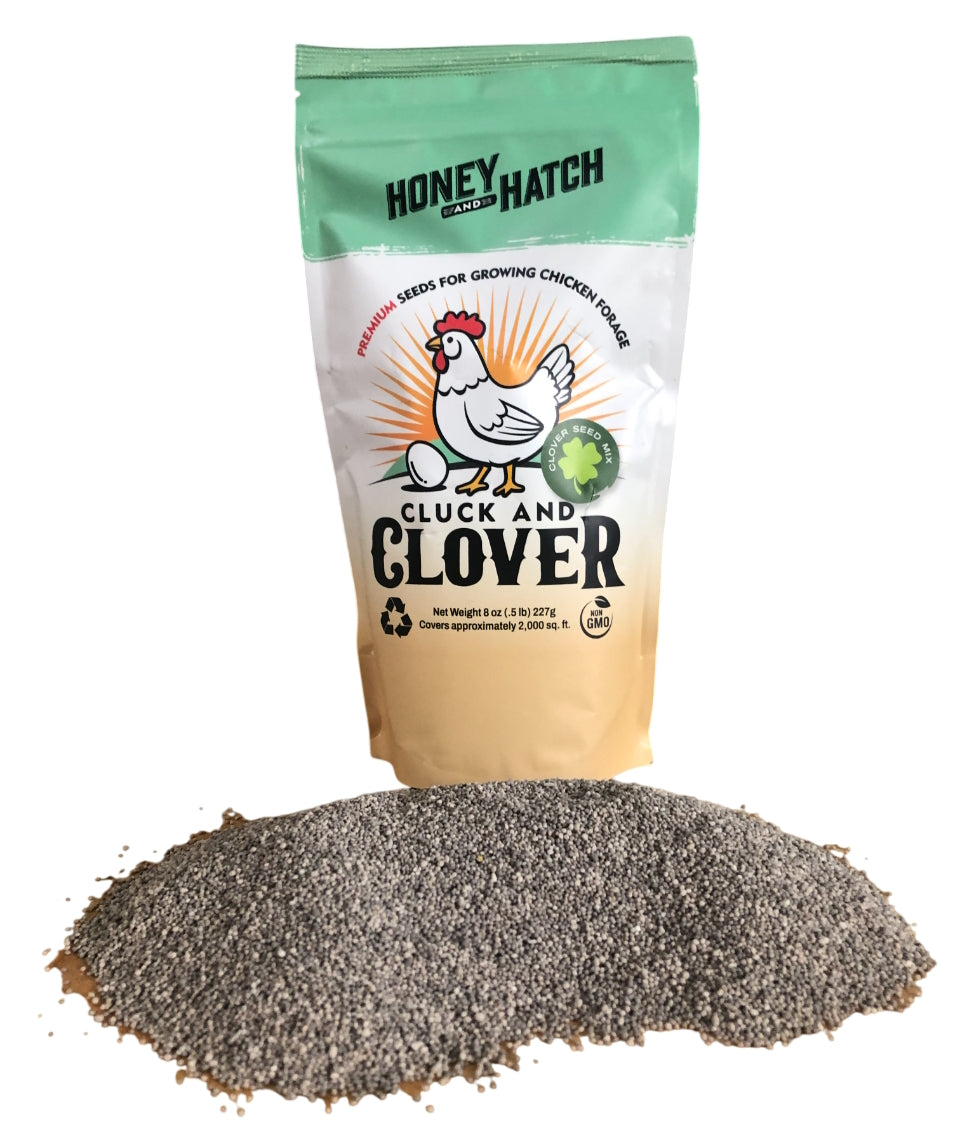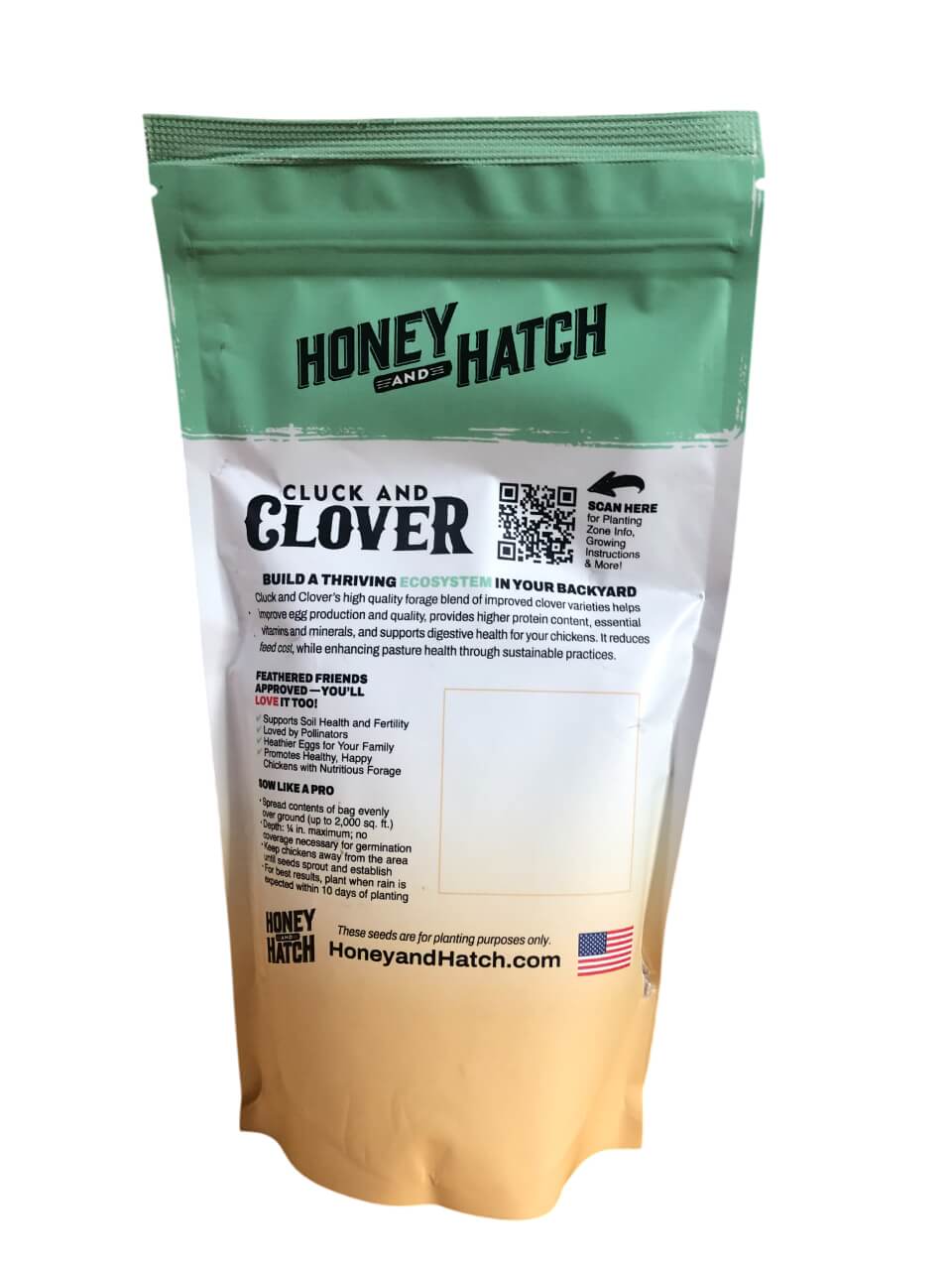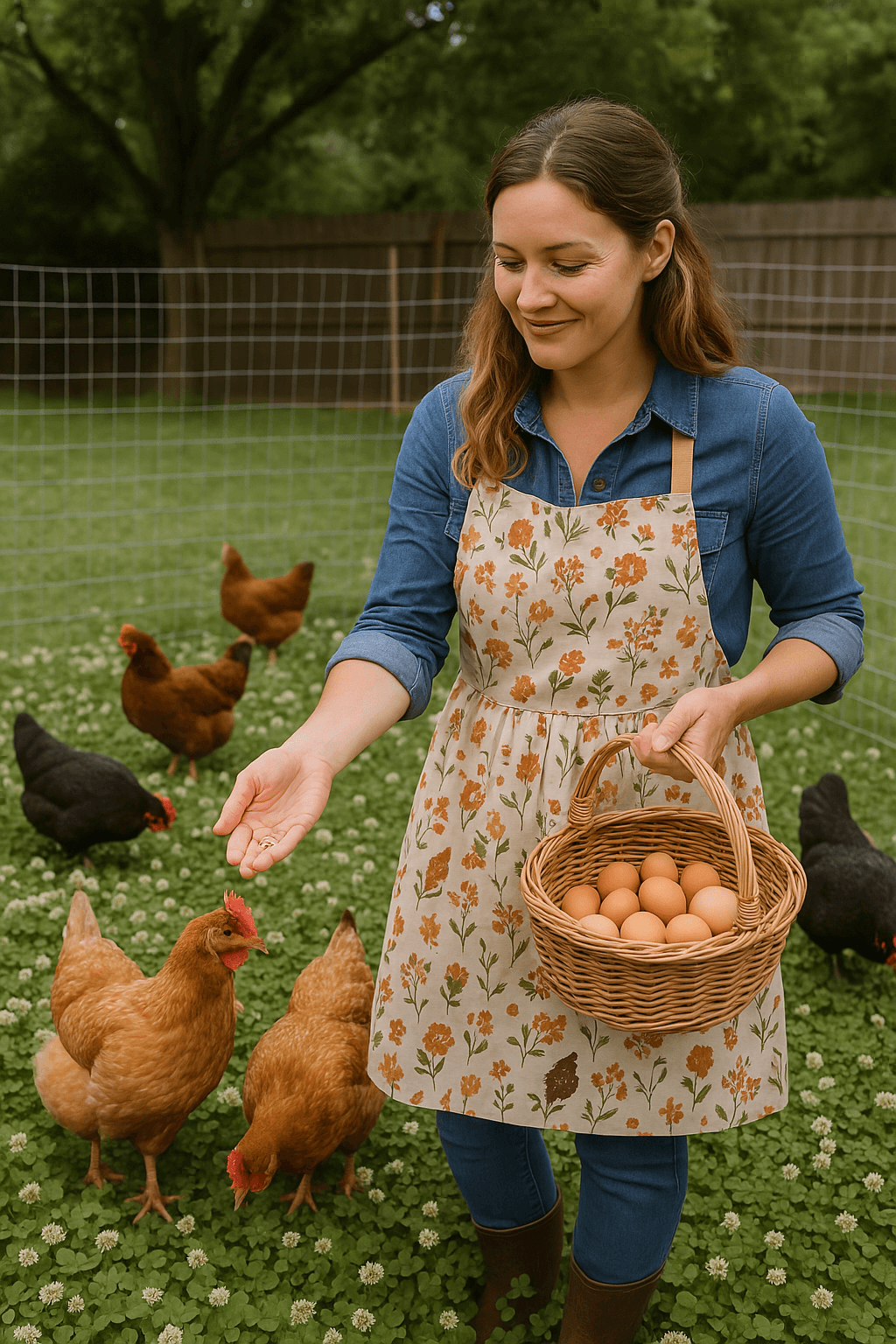
How to Build a Chicken Run That Feeds Your Chickens
Share
Chicken Keeping is Booming
Backyard chicken keeping is booming. Between rising egg prices, viral “egg-fluencers,” and the satisfaction of gathering your own farm-fresh eggs, more families are saying yes to hens.
Why Most Chicken Runs Fail
But if you’re researching DIY chicken coops and runs, you’ve probably run into a common challenge. Dusty, smelly, bare runs are the #1 frustration for backyard chicken keepers. Between scratching, pecking, and constant traffic, grass disappears within weeks. That leaves mud in the spring, dust in the summer, and odors year-round.
But there’s a better way. With a few simple design choices and one powerful plant — clover — your chicken run can actually feed your hens while staying clean, green, and predator-proof.
Common pain point questions:
- How do I keep the run clean and low-odor?
- What can I plant inside a chicken run that won’t die off in a week?
- How do I make free-ranging healthier without risking predators?
- Is there a way to cut feed costs without compromising nutrition?
Good news: the answer to many of these questions is the same… clover.
Let’s walk through how to build a chicken run that’s practical, beautiful, and actually benefits your flock—while spotlighting why Cluck and Clover might just be your hens’ new favorite salad bar.
Step 1: Build a Safe, Functional Run
Before adding plants, get the basics right:
- Space: Aim for 8–10 square feet per bird. More space = less stress and disease.
- Predator-proofing: Use hardware cloth (not chicken wire). Bury fencing 12 inches deep to stop diggers.
- Drainage: Slightly slope or elevate your run to avoid mud and bacteria buildup.
Pro tip: Build with planting in mind. Leave some sections of soil exposed instead of going 100% gravel or sand. Those “green zones” are where clover will thrive.
Step 2: Plant Clover as Living Groundcover
Clover is the ultimate chicken run companion:
- Self-repairing: Unlike grass, clover spreads quickly and fills bare patches.
- Soil improver: Clover fixes nitrogen, reducing odors and keeping soil healthier.
- Nutrient-rich forage: Packed with protein and vitamins, it naturally supplements feed.
- Cooling cover: Clover shades soil, lowering dust and heat in summer.
Think of clover as a living carpet for your hens — resilient, nutritious, and self-sustaining.
Step 3: Solve Common Pain Points with Clover
Chicken keepers often ask:
-
What can I plant in a chicken run that won’t be destroyed?
Clover. It regrows after scratching and pecking. -
How do I keep my chicken run from smelling bad?
Clover fixes nitrogen and cuts odors naturally. -
Can I cut feed costs without hurting nutrition?
Clover reduces reliance on bagged feed while boosting flock health. -
How do I make my run look less barren?
Clover transforms weedy, dusty, dirt runs into mini-pastures.
Step 4: How to Plant Clover in Your Chicken Run
- Choose the right mix: White and Persian clovers are best for grazing.
- Prep soil: Lightly rake the surface for good seed contact.
- Sow evenly: Scatter seeds into exposed zones of the run.
- Protect growth: Block hens from grazing until plants reach 4–6 inches.
- Maintain: Overseed yearly. Your chickens will keep it mowed.

Why Cluck & Clover™ Works Best
While any clover helps, Honey & Hatch’s Cluck & Clover™ mix is designed specifically for backyard flocks. It combines premium clover varieties chosen for:
- Quick regrowth after scratching
- High protein and nutrient density
- Soil-building nitrogen-fixing properties
It’s forage, groundcover, and enrichment — all in one.
👉 Order Cluck & Clover™ today and turn your chicken run into a salad bar for hens.

Final Thoughts
A chicken run doesn’t have to be a smelly, bare patch of dirt. By planting clover, you’re creating a cleaner, healthier environment for your flock, reducing feed costs, and improving your soil.
So while everyone else is just googling “DIY chicken coop plans,” you’ll be the one saying: “My coop practically grows breakfast for me.”
Your hens will thank you with better health, happier behavior, and richer eggs.
That’s the power of clover.
















